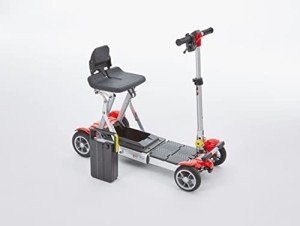Understanding Mobility Devices: Enhancing Independence and Quality of Life
In today's busy world, the desire for mobility is universal. Nevertheless, specific medical conditions or age-related difficulties can impede movement, causing an ongoing search for support. Mobility devices work as essential tools to improve independence, enhance lifestyle, and enable individuals to engage fully in their communities. This short article offers a comprehensive introduction of mobility devices, including their types, features, selection requirements, and more.
Kinds Of Mobility Devices
Mobility devices vary from basic aids to complex equipment, tailored to meet various requirements. Below is a table summing up common types of mobility devices:
| Type of Device | Description | Perfect For |
|---|---|---|
| Walkers | Four-legged support devices that offer remarkable stability while strolling. | Individuals needing additional support. |
| Canes | Single or three-legged sticks that improve balance and support walking. | Those with small mobility problems. |
| Wheelchairs | Seats installed on wheels, offered in manual and electric variations. | Individuals with minimal or no mobility. |
| Scooters | Electric cars designed for outdoor usage and ease of navigation. | Those who can't stroll fars away. |
| Crutches | Devices that assist individuals move weight away from a hurt leg. | Individuals recuperating from leg injuries. |
| Rollators | Walkers with wheels, seats, and brakes for improved mobility. | Users requiring rest options while strolling. |
| Lift Chairs | Reclining chairs that assist users in standing up and taking a seat. | Seniors or those with mobility restrictions. |
| Mobility Scooters | Small electric automobiles for minimal mobility, typically used outdoors. | Individuals requiring help over long ranges. |
Key Features of Mobility Devices
When selecting a mobility device, numerous key features ought to be thought about to ensure optimum functionality and ease of use:
- Weight Capacity: Understanding the gadget's weight restriction is important for security and efficiency.
- Adjustability: Devices ought to be adjustable in height and width to fit the user comfortably.
- Portability: Lightweight and foldable options are essential for users who travel or require transport.
- Stability and Safety: Look for functions like anti-tip wheels and tough structures to boost security.
- Reduce of Use: Simple mechanisms and easy to use styles can make a significant difference in day-to-day usage.
- Comfort: Ergonomic designs and cushioned seats can improve the user experience.
Picking the Right Mobility Device
Selecting the best mobility device can be an overwhelming task. Here are some steps to assist the decision-making procedure:
- Assess Needs: Evaluate the person's mobility obstacles and day-to-day activities.
- Consult a Professional: Engage healthcare specialists who can provide recommendations based on the person's physical condition.
- Trial Options: If possible, trial different devices to figure out comfort and performance.
- Evaluation Budget: Consider the expense of the gadget, consisting of any extra features or adjustments needed.
- Research study Options: Determine the best brands and models by reading reviews and comparisons.
Table: Comparative Analysis of Popular Mobility Devices
| Gadget | Advantages | Disadvantages |
|---|---|---|
| Walkers | Exceptional stability, promotes walking. | Bulky, may limit motion in small spaces. |
| Walking canes | Lightweight, improves balance. | May not provide adequate support for severe mobility issues. |
| Wheelchairs | Ideal for those with significant mobility limitations. | Can be cumbersome, especially in indoor environments. |
| Scooters | Great for outside use, easy to maneuver. | Minimal indoor use, much heavier. |
| Rollators | Supplies rest option, simple to move. | May need more area than standard walkers. |
| Raise Chairs | Comfortable, assists shift from sitting to standing. | More pricey, bigger footprint. |
Frequently Asked Questions (FAQs)
1. What is a mobility device?
A mobility device is any tool created to assist individuals in moving and navigating their environment. This includes walkers, wheelchairs, scooters, and crutches.
2. How do collapsible scooters understand which mobility device is best for me?
Consider your specific mobility obstacles, physical capabilities, and lifestyle needs. Consulting with health care experts can likewise provide tailored recommendations.
3. Are mobility devices covered by insurance?
Many insurance coverage strategies, consisting of Medicare, may cover specific mobility devices. It's crucial to examine with your insurance coverage company for specific coverage details.
4. Can I lease a mobility gadget instead of buying one?
Yes, many medical supply shops and drug stores offer rentals for mobility devices. This option is advantageous for individuals with temporary mobility problems.
5. How can I keep my mobility gadget?
Regular maintenance is essential. It consists of cleaning up the gadget, looking for wear and tear, and making sure all parts are operating properly.
The Impact of Mobility Devices on Quality of Life
Mobility devices significantly enhance the quality of life for people with limited mobility. They cultivate independence, motivate social interaction, and boost access to vital services and recreational activities.
- Increased Independence: Users can navigate their areas, attend occasions, and participate in hobbies without depending on others.
- Social Engagement: Mobility devices facilitate involvement in social events, thereby combating sensations of seclusion.
- Improved Safety: Devices offer stability and lower the danger of falls, promoting user self-confidence.
Mobility devices are more than just tools for movement; they are gateways to self-reliance and quality living. By understanding the various kinds of mobility aids available, their key features, and factors to consider for selecting the ideal gadget, people can make informed decisions about their mobility requires. Eventually, the best mobility device can cause a more active, fulfilling life. Whether it's a walker, wheelchair, or scooter, the ideal option contributes significantly to boosting the mobility and independence of users.

